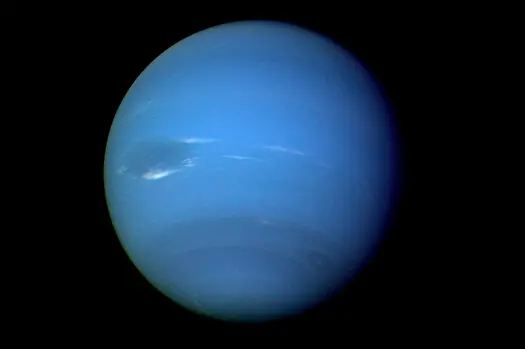
The finding of three hitherto unidentified moons of Neptune and Uranus demonstrates that the ice giants, like Jupiter and Saturn, have families of distant moons made from the shattering of larger, caught objects. There must be more moons out there; however, to see them, a space probe would need to be sent.
The last 20 years have seen the discovery of dozens of moons orbiting Jupiter and Saturn. Only one new moon was formally added for Neptune, and since 2003, no new moons have been found orbiting Uranus. With these new findings, Uranus now has 28 known moons, while Neptune has 16.
According to Scott Sheppard of Carnegie Science, "these objects are at the edge of detectability," which makes it difficult to locate these moons in the outer solar system.
The outer solar system may contain the key to understanding how the solar system formed and evolved in its early stages, according to planetary scientists. For this reason, the National Academy of Sciences' decadal survey published last year gave top priority to launching a significant mission, the Uranus Orbiter and Probe, in the mid-2030s. According to Sheppard, "the ice giants have been neglected." A mission to Neptune has even been advocated by some, he continues.
One new moon orbiting Uranus and two around Neptune were revealed by the Minor Planet Center of the International Astronomical Union on February 23. These are the smallest moons orbiting the ice giants that have yet been discovered by ground-based telescopes.
The moon orbiting Uranus, which is now known as S/2023 U1, is the first to be found orbiting the ice giant in over two decades. It is most likely the planet's smallest known moon, measuring only 8 kilometers (5 miles) across. Its orbit lasts for 680 days. On November 4, 2023, Sheppard used the Magellan telescope at Las Campanas Observatory in Chile to make the first observation of S/2023 U1. December follow-ups solidified its orbit, which helped uncover hitherto unreported observations of the moon made in 2021 with the Magellan and Subaru telescopes in Hawaii.
Although they had been seen earlier, the two new moons orbiting Neptune had not been studied for long enough to determine their orbits.
Sheppard and Magellan made the initial discovery of the larger and brighter one in October 2021, and they worked together again on additional observations in 2022 and 2023. He discovered that it had been seen close to Neptune twenty years before after collaborating with Bob Jacobson and Marina Brozovic (both at NASA Jet Propulsion Laboratory) to compute its orbit. It is 23 kilometers in diameter and takes nine years to complete a full rotation around Neptune. It is currently known as S/2002 N5.
The smaller Neptunian moon, tentatively named S/2021 N1, has an approximate diameter of 14 km and circles Neptune in nearly 27 years, which is the longest orbit known for any planetary moon. In September 2021, Sheppard and associates used the Subaru telescope to witness the incredibly faint moon for the first time. They combined observations from the Gemini North Telescope in Hawaii and the Very Large Telescope in Chile to get the observations required to determine the orbit of the faint moon.
With respect to two larger moons, the orbits of the three new moons are clustered together. Alongside Caliban and Stephano, two of Uranus's more prominent and larger moons, is the recently discovered S/2023 U1. Sao and Laomedeia's orbits at Neptune resemble those of S/2002 N5, while Psamathe and Neso's orbits resemble those of S/2021 N1. Most likely, these clusters are families that were created when a bigger object was broken up.
It will be difficult to find more of these faint, far-off moons. Sheppard had to take multiple five-minute exposures in order to find these three because individual images would have blurred due to the motion of the moon. Over a maximum of four hours, image sequences were captured while the moons were still high enough in the sky to allow for clear visibility. In order to get photos deep enough to display the moon, he also needed to gather data over a number of nights and carefully stack the exposures.
This is an effective technique, but it takes a lot of time on the largest telescopes in the world to detect such faint objects. With the Uranus Orbiter and Probe, the largest and most advanced telescopes on Earth would be able to get up close and personal with objects that are only dim points in the sky.